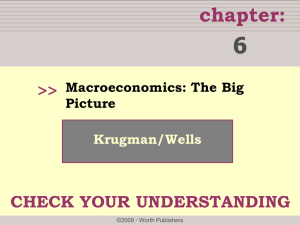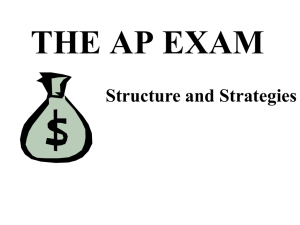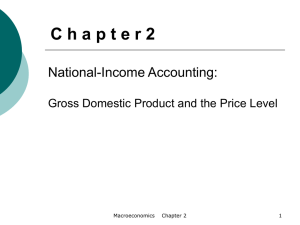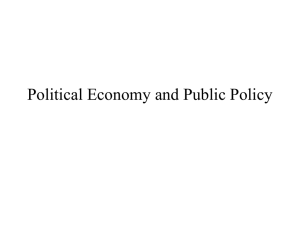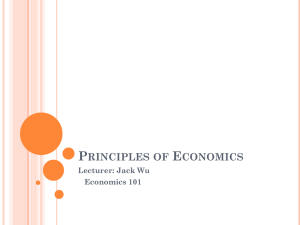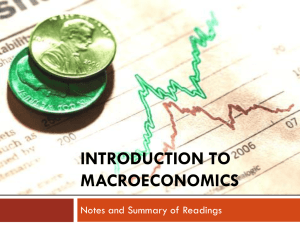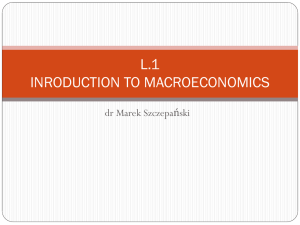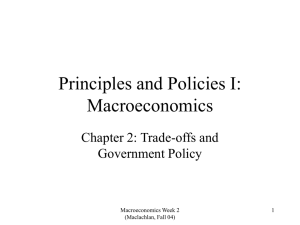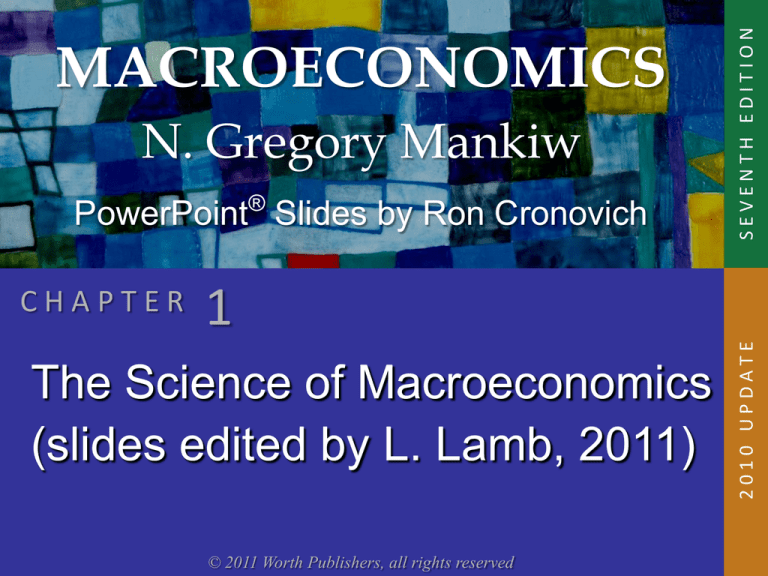
N. Gregory Mankiw
PowerPoint® Slides by Ron Cronovich
1
The Science of Macroeconomics
(slides edited by L. Lamb, 2011)
© 2011 Worth Publishers, all rights reserved
2010 UPDATE
CHAPTER
SEVENTH EDITION
MACROECONOMICS
In this chapter, you will learn:
1.1. about the issues macroeconomists study
1.2 the tools macroeconomists use
- some important concepts in
macroeconomic analysis
1.1 Important issues in
macroeconomics
Macroeconomics, the study of the economy as
a whole, addresses many topical issues, e.g.:
What causes recessions? What is
“government stimulus” and why might it help?
How can problems in the housing market spread
to the rest of the economy?
What is the government budget deficit?
How does it affect workers, consumers,
businesses, and taxpayers?
CHAPTER 1
The Science of Macroeconomics
2
Important issues in macroeconomics
Macroeconomics, the study of the economy as
a whole, addresses many topical issues, e.g.:
Why does the cost of living keep rising?
Why are so many countries poor? What policies
might help them grow out of poverty?
What is the trade deficit? How does it affect the
country’s well-being?
CHAPTER 1
The Science of Macroeconomics
3
Figure 1.1 Real GDP per Person in the Canadian Economy
Mankiw and Scarth: Macroeconomics, Canadian Fourth Edition
Copyright © 2011 by Worth Publishers
CHAPTER 1
The Science of Macroeconomics
4
Figure 1.2 The Inflation Rate in the Canadian Economy
Mankiw and Scarth: Macroeconomics, Canadian Fourth Edition
Copyright © 2011 by Worth Publishers
CHAPTER 1
The Science of Macroeconomics
5
Figure 1.3 The Unemployment Rate in the Canadian Economy
Mankiw and Scarth: Macroeconomics, Canadian Fourth Edition
Copyright © 2011 by Worth Publishers
CHAPTER
1 The Science
of Macroeconomics
6
1.2 Economic models
…are simplified versions of a more complex reality
irrelevant details are stripped away
…are used to
show relationships between variables
explain the economy’s behavior
devise policies to improve economic
performance
CHAPTER 1
The Science of Macroeconomics
7
Example of a model:
Supply & demand for new cars
shows how various events affect price and
quantity of cars
assumes the market is competitive: each buyer
and seller is too small to affect the market price
Variables
Qd = quantity of cars that buyers demand
Qs = quantity that producers supply
P = price of new cars
Y = aggregate income
Ps = price of steel (an input)
CHAPTER 1
The Science of Macroeconomics
8
Endogenous vs. exogenous variables
The values of endogenous variables
are determined in the model.
The values of exogenous variables
are determined outside the model:
the model takes their values & behavior
as given.
In the model of supply & demand for cars,
endogenous: P, Qd, Qs
exogenous:
CHAPTER 1
Y , Ps
The Science of Macroeconomics
9
Figure 1.4 How Models Work
Mankiw and Scarth: Macroeconomics, Canadian Fourth Edition
Copyright © 2011 by Worth Publishers
CHAPTER 1
The Science of Macroeconomics
10
NOW YOU TRY:
Supply and Demand
1. Write down demand and supply functions
for wireless phones; include two exogenous
variables in each function.
2. Draw a supply-demand graph for wireless
phones.
3. Use your graph to show how a change in
one of your exogenous variables affects the
model’s endogenous variables.
The use of multiple models
No one model can address all the issues we
care about.
E.g., our supply-demand model of the car
market…
can tell us how a fall in aggregate income
affects price & quantity of cars.
cannot tell us why aggregate income falls.
CHAPTER 1
The Science of Macroeconomics
12
The use of multiple models
So we will learn different models for studying
different issues (e.g., unemployment, inflation,
long-run growth).
For each new model, you should keep track of
its assumptions
which variables are endogenous,
which are exogenous
the questions it can help us understand,
those it cannot
CHAPTER 1
The Science of Macroeconomics
13
Prices: flexible vs. sticky
Market clearing: An assumption that prices are
flexible, adjust to equate supply and demand.
In the short run, many prices are sticky –
adjust sluggishly in response to changes in
supply or demand.
CHAPTER 1
The Science of Macroeconomics
14
Prices: flexible vs. sticky
The economy’s behavior depends partly on
whether prices are sticky or flexible:
If prices sticky (short run),
demand may not equal supply, which explains:
unemployment (excess supply of labor)
why firms cannot always sell all the goods
they produce
If prices flexible (long run), markets clear and
economy behaves very differently
CHAPTER 1
The Science of Macroeconomics
15
Chapter Summary
Macroeconomics is the study of the economy
as a whole, including
growth in incomes
changes in the overall level of prices
the unemployment rate
Macroeconomists attempt to explain the
economy and to devise policies to improve its
performance.
Chapter Summary
Economists use different models to examine
different issues.
Models with flexible prices describe the
economy in the long run; models with sticky
prices describe the economy in the short run.
Macroeconomic events and performance arise
from many microeconomic transactions, so
macroeconomics uses many of the tools of
microeconomics.
Homework- end of chapter questions
Questions for review (end of chapter): 1,2,3
Problems and Applications(end of chapter): 3 & 4
CHAPTER 1
The Science of Macroeconomics
18

